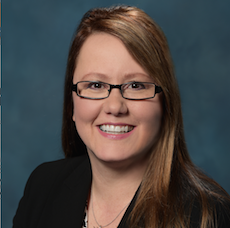
The annual publication of the LeadingAge Ziegler 150 report inspires various “top five” or “top 10” lists related to senior living in the media. McKnight’s Senior Living, for instance, offers a list of the five largest not-for-profit assisted living providers, along with other highlights of the 2015 report, in this article.
In addition to the lists, however, the report—from LeadingAge, an association of not-for-profit aging services providers, and Ziegler, an underwriter of financing for senior living, housing and healthcare providers—shares several trends of interest to those working in senior living. Some of this information won’t necessarily come as a surprise, but the report confirms and puts data to the anecdotal evidence about changes occurring in the not-for-profit part of the industry.
For instance, the report’s data indicate a continuing increase in independent and assisted living units as well as a decline in nursing care beds. In fact, the total number of independent and assisted living units has increased every year in the past 10 years, according to the report, whereas the number of nursing care beds has declined. Total annual growth in senior living from 2000 to 2014 averaged 2.1% overall, but annual growth in assisted living averaged 3.8%, and annual growth in independent living averaged 2.8%, compared with a relatively flat average annual growth rate of 0.1% in nursing care beds.
Data on year-over-year changes in community mix from in the past 10 years also favor continuing care retirement communities (2.0% average annual growth), assisted living (2.5%) and independent living (2.0%) compared with nursing homes (–1.4%).
Additionally, the report finds that memory care units increasingly are a part of providers’ offerings. As of Dec. 31, 79% of the organizations on the LZ 150 offered specialized memory care units, with 33.3% offering only assisted living memory support and 36.7% offering both assisted living and skilled nursing memory care services.
An increasing number of owners/operators also are offering home- and community-based services to non-residents. According to the 2015 report, 56.6% of LZ 150 organizations offer such services. About 12.5% offer services via the Continuing Care at Home, or CCaH, model; 10.1% offer services through the Program of All-Inclusive Care for the Elderly, or PACE model; and 36.4% offer hospice services.
Of single-campus senior living communities, the LZ 150 report indicates that 42.4% offer HCBS to both internal residents and those in the greater community, 36.4% offer HCBS to residents only and 30% offer HCBS only to those in the greater community.
LZ 150 organizations have grown mainly through expansion of existing campuses, affiliation or acquisition, according to LeadingAge and Ziegler. The number of units offered through new campus growth has slowed in the past several years since the economic recession.
Looking to the future, almost 71.5% of LZ 150 organizations communicated plans to expand or reposition within the next two years. Thirty-eight percent of organizations on the list said they were planning to add communities in 2015 or 2016, 25% indicated that they might grow by adding new communities, and 37% said they were not planning to add new communities during that time.
View the report (PDF) to see additional insights about the past, present and future of senior living.
Lois A. Bowers is senior editor of McKnight’s Senior Living. Follow her on Twitter at @Lois_Bowers.



